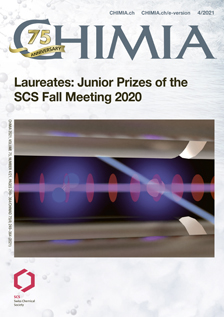Iron-Catalysed Remote C(sp3)-H Azidation of O-Acyl Oximes and N -Acyloxy Imidates
DOI:
https://doi.org/10.2533/chimia.2021.329PMID:
33902804Keywords:
Azides, C–h functionalisation, 1,5-hat, Iron catalysis, RadicalAbstract
The azido group occupies an important position in modern organic chemistry, broadly used as amine surrogates and as anchors in bioconjugation. Despite their importance, examples of selective direct azidation of inert C(sp3)–H bonds remain limited and often require strong oxidative conditions. Herein, we highlight the use of O-acyl oximes and N-acyloxy imidates as directing groups for the selective iron-catalysed azidation of C(sp3)–H bond with trimethylsilyl azide, giving access to various ?-azido ketones and ?-azido alcohols in moderate to excellent yields. The iron catalyst is assumed to play a dual role in these catalytic processes: as a reductant to generate the reactive iminyl and imidate radicals, respectively, and as a redox centre to mediate the azido transfer to the translocated carbon radical.Downloads
Published
2021-04-28
Issue
Section
Scientific Articles
License
Copyright (c) 2021 Alexandre Leclair, Rubén O. Torres-Ochoa, Qian Wang, Jieping Zhu

This work is licensed under a Creative Commons Attribution 4.0 International License.
How to Cite
[1]
A. Leclair, R. O. Torres-Ochoa, Q. Wang, J. Zhu, Chimia 2021, 75, 329, DOI: 10.2533/chimia.2021.329.







